Your dog isn’t “just being weird.” They might be crying for help—and you’re missing it. That tail chasing, floor licking, or constant yawning? It’s not quirky. It’s anxiety, dressed up as everyday behavior. Dogs don’t always show stress with barks or whines. Sometimes it’s subtle. Sometimes it’s silent. But if you know what to look for, the signs are everywhere. This guide breaks down 13 surprisingly common habits that point to hidden distress—and gives you real ways to help your pup feel safe again.
Pacing and Restlessness
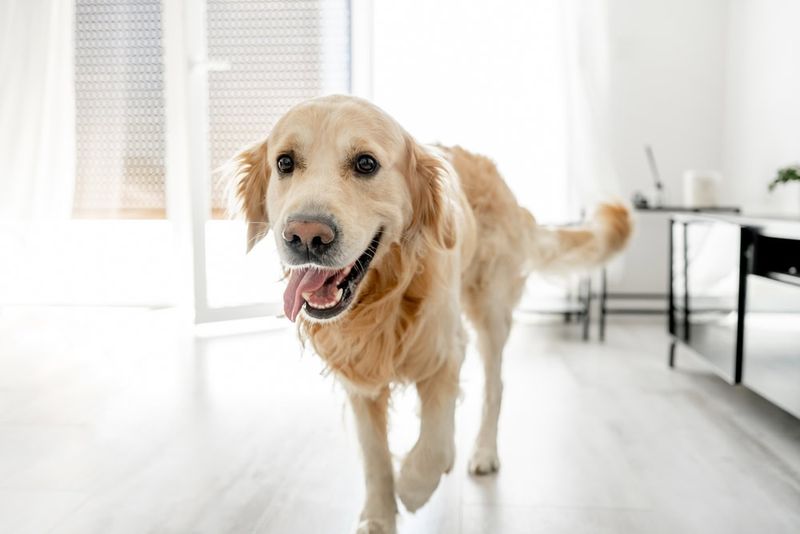
Pacing in circles or back and forth is a classic sign of canine anxiety. This behavior indicates that your dog is unable to relax, mirroring the internal unrest it feels. Typically, anxiety can trigger this restless movement, especially if there’s a change in their environment or routine. Try to create a calm and consistent atmosphere at home to help alleviate this discomfort.
Ensure your dog has a dedicated space where it feels safe and secure. A soothing environment, along with regular exercise, can significantly reduce feelings of anxiety. Providing interactive toys can also divert their attention and offer mental stimulation.
Excessive Barking

Excessive barking, especially in response to minimal stimuli, is often a sign of underlying anxiety. This vocal expression serves as an outlet for your dog’s nervous energy. Barking at every passerby or noise can indicate that your dog is feeling insecure and needs reassurance.
To help mitigate this, ensure your dog gets sufficient exercise and mental stimulation. Reassure them with gentle attention and establish a predictable routine. Training techniques that encourage calm behavior, such as rewarding silence, can also be beneficial in reducing anxiety-driven barking.
Destructive Chewing
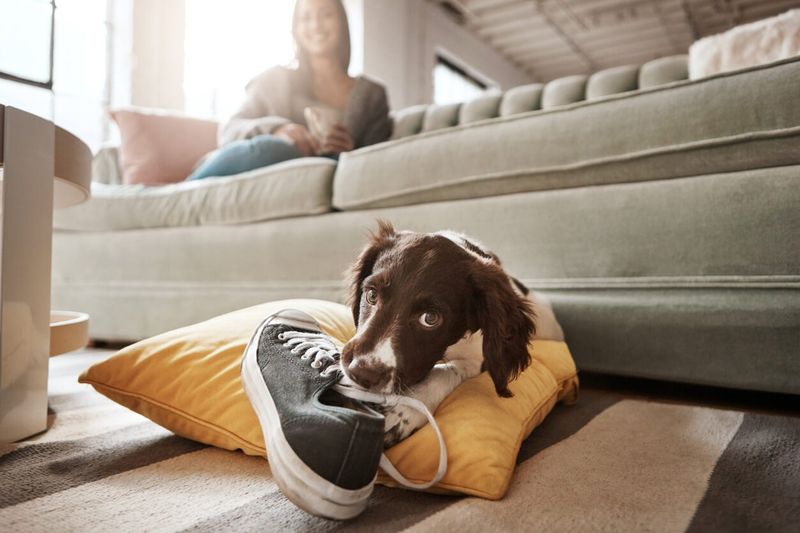
Dogs often resort to destructive chewing as a way to cope with anxiety. If you find your belongings in tatters, it might be your dog’s method of releasing pent-up stress or boredom. This behavior usually escalates when they’re left alone for extended periods.
To prevent this, provide your dog with chew toys and engage in interactive play to use up their energy. Consider crate training for a sense of security, and avoid leaving them alone for too long. Regularly rotating toys keeps their interest piqued and reduces anxiety-driven chewing.
Excessive Licking
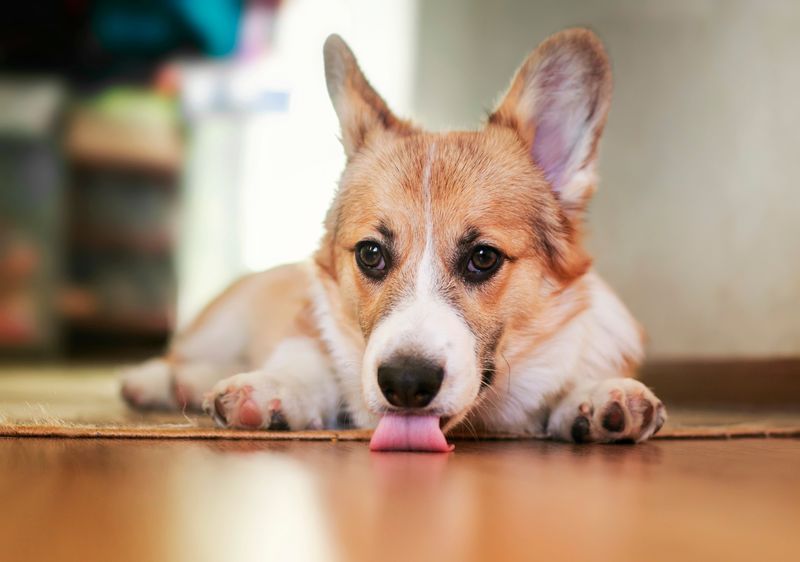
When your dog licks excessively, it’s often a coping mechanism for anxiety. While licking can be a soothing action, overdoing it leads to sores and irritation. This habit stems from their attempt to comfort themselves when feeling stressed or anxious.
To address this, first rule out any medical issues with a vet visit. If anxiety is the cause, provide distractions like interactive toys or puzzles. Calming sprays or pheromone diffusers may also help soothe your pet’s nerves, giving them a more peaceful living environment.
Hiding or Cowering

Dogs that hide or cower show signs of anxiety and fear. This behavior often occurs in response to loud noises or unfamiliar situations. Your dog might retreat to a safe spot, seeking comfort away from perceived threats.
Help your dog feel secure by providing a cozy den-like space where they can retreat. Gradually desensitize them to noises or new experiences by pairing them with positive reinforcement. Gentle encouragement and patience are key in helping them overcome their fears and gain confidence.
Loss of Appetite
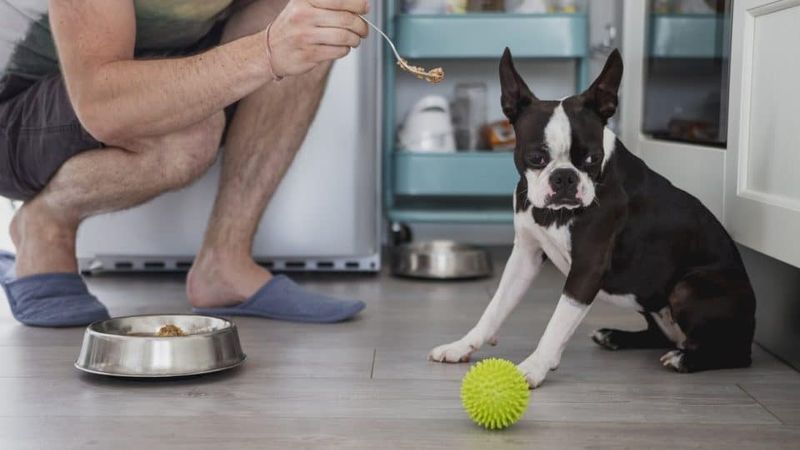
A sudden decrease in appetite can signal your dog is feeling anxious. Anxiety impacts their digestive system, leading them to skip meals even when hungry. This loss of interest in food might coincide with changes in their routine or environment.
To encourage eating, maintain a quiet and calm feeding area. Stick to a consistent feeding schedule and introduce appealing, nutritious foods. If the issue persists, a visit to the vet is wise to rule out any health concerns contributing to their anxiety.
Yawning and Panting
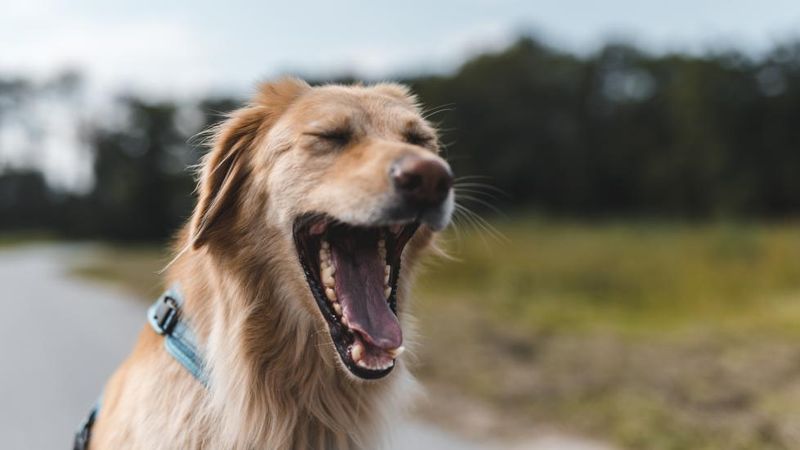
Yawning and panting, despite not being tired or hot, can indicate anxiety in dogs. These are self-calming behaviors that your pet uses to deal with stress. When they occur frequently, it suggests your dog is trying to manage its nervous energy.
To help, identify triggers and try to minimize their impact. Ensure your dog feels secure and supported, offering plenty of water and a cool space to relax. Regular playtime and exercise can help manage stress and reduce these anxiety symptoms.
Trembling or Shaking

Trembling or shaking is a visible sign of anxiety in dogs, often linked to fear or stress responses. This behavior can manifest during thunderstorms, fireworks, or other loud events. It signals that your dog feels overwhelmed and seeks safety.
Create a quiet, safe space where your dog can retreat during stressful times. Offering comfort through gentle petting and soothing words helps reassure them. Some dogs benefit from anxiety wraps or jackets that provide a calming pressure.
Whining or Whimpering

Whining or whimpering often indicates your dog’s anxiousness, serving as a plea for attention or comfort. This vocalization is particularly common when they’re left alone or facing stressful situations. It reflects their need for reassurance and connection.
Acknowledge their distress and offer comfort, avoiding reinforcing the behavior by rewarding calmness instead. Training and gradual desensitization can help, paired with ample affection and companionship. Ensure they have distractions like toys when you are away to keep their mind occupied.
Digging at Unusual Times
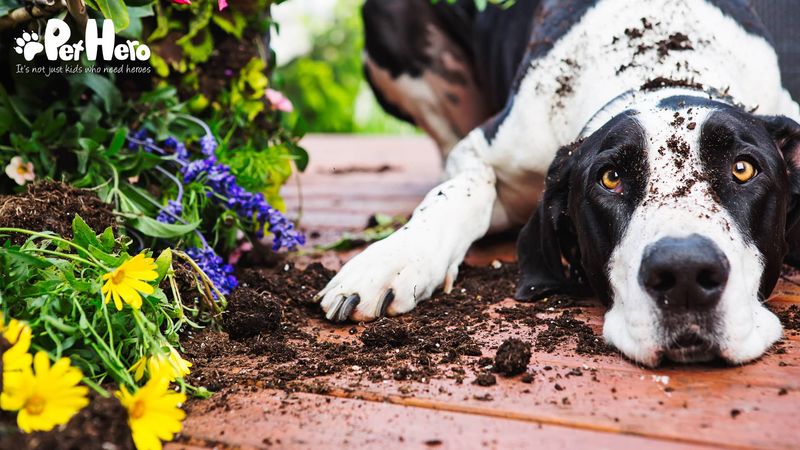
Digging isn’t just a playful activity; it can also signal anxiety. If your dog starts digging at odd hours or in unusual places, it might be trying to relieve stress. This behavior often occurs when they’re left alone or feel threatened.
Address this by providing a dedicated digging area in the garden if space allows. Increase interactive play and exercise to channel their energy positively. Creating a secure, comforting environment helps alleviate anxiety and reduces the need for stress-related digging.
Frequent Urination
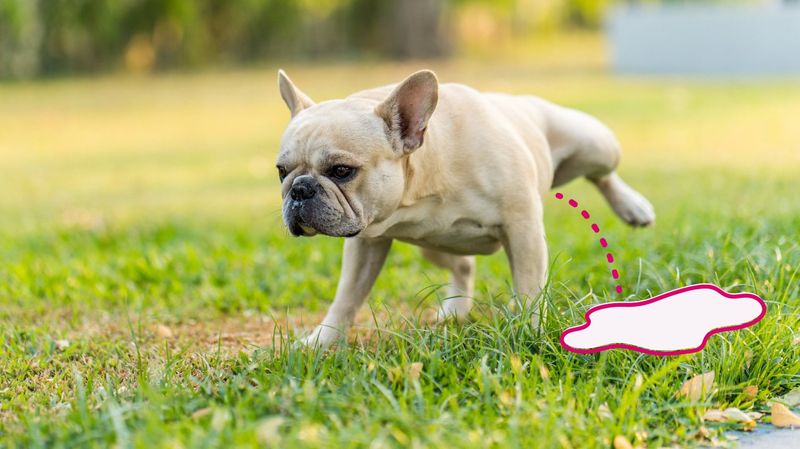
Frequent urination can be a stress response, especially if it happens in inappropriate places. Anxiety can lead to loss of control over bladder functions, causing accidents even in housetrained dogs. This behavior might coincide with new environments or changes at home.
Consult a vet to rule out medical issues and establish a routine that offers regular bathroom breaks. Positive reinforcement for proper bathroom behavior and creating a relaxed atmosphere can help manage anxiety-related urination issues.
Drooling Excessively
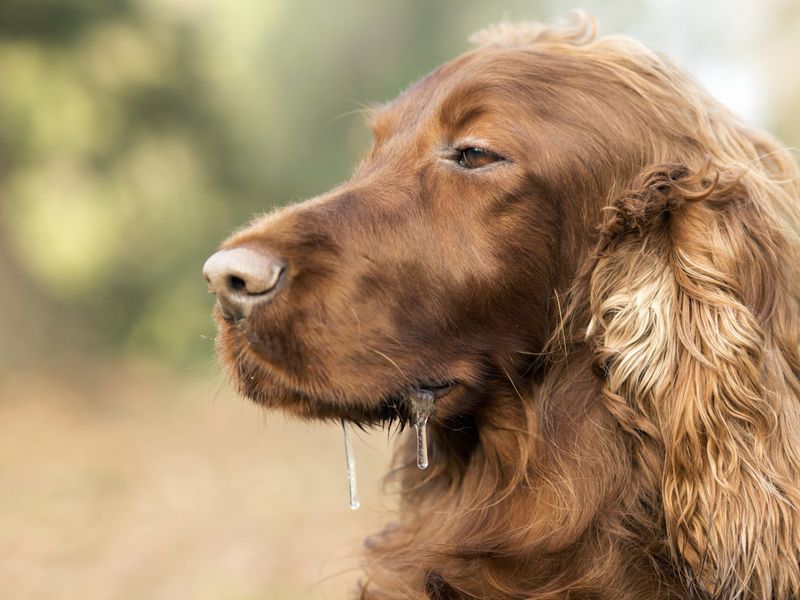
Excessive drooling can be more than just a breed trait; it can signal anxiety. When dogs drool excessively, it might indicate they’re nervous about a situation or change. This is often accompanied by other signs like panting or pacing.
Identify and minimize anxiety triggers, and provide a cool, calm space for your dog. Regular exercise and mental stimulation can help manage stress levels. If drooling persists, consulting a vet is wise to exclude medical issues and ensure your dog’s well-being.
Aggression or Irritability
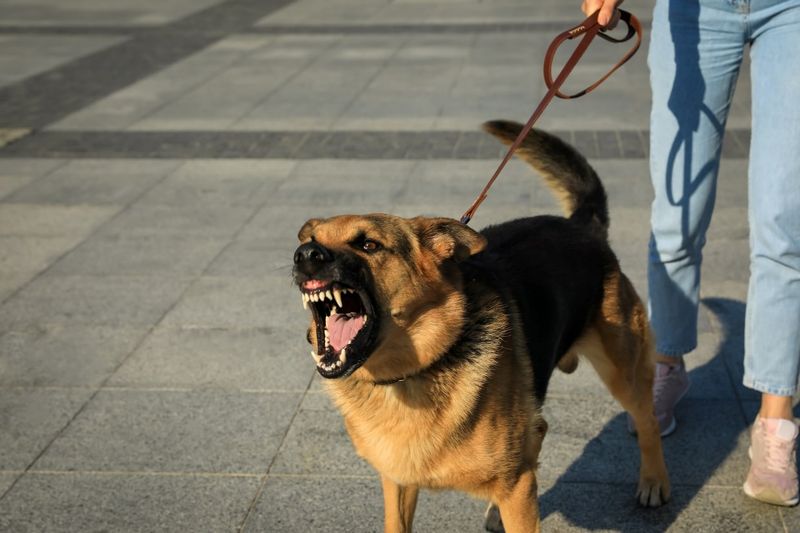
Aggression or irritability can sometimes mask anxiety in dogs. If your typically friendly pet suddenly becomes snappy or growls, stress or fear could be the root cause. Changes in their environment or routine often trigger this response.
Address this behavior with patience, avoiding punitive measures. Instead, provide reassurance and establish a predictable routine. Consulting a professional trainer might be beneficial, especially if aggression persists. Understanding your dog’s triggers and offering a steady, loving environment can help restore their calm demeanor.

